ICD classification of diseases
The International Classification of Diseases (ICD) is the standard classification system for epidemiology, health management and clinical purposes
It contains a finite number of mutually exclusive code categories, describing all disease conditions. The classification is hierarchical in structure with subdivisions to identify broad groups and specific entities.
1. It has 3 volumes
There are 3 key elements to the structure of ICD-10:
2. It has 22 chapters
3. The structure of the ICD code is alphanumeric
1. It has 3 volumes - They are
i. Volume 1 -- a tabular listing of diseases
ii. Volume 2 -- an instruction manual
iii. Volume 3 -- the comprehensive alphabetical index of diseases
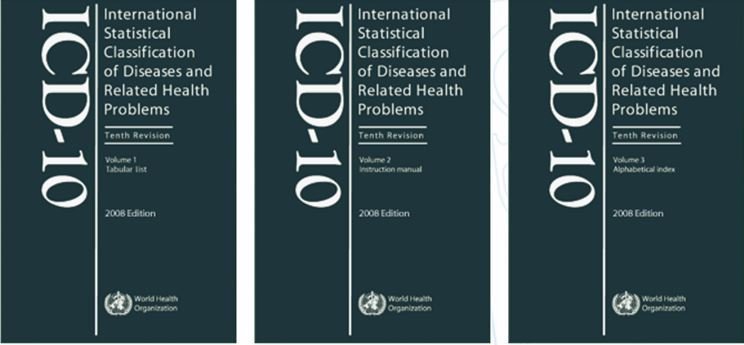
2. It has 22 chapters
a. Each chapter is identified by a Roman numeral i.e. I, II, III, IV, V etc. and associated alphabet(s). These 22 chapters cover 2046 disease categories
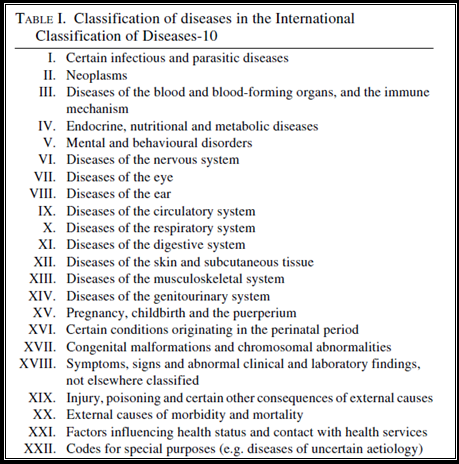
The chapters are associated with either
-
particular organ systems
Eg Chapter IX: Diseases of the Circulatory system

OR
-
special diseases (affecting any part of the body)
Eg Chapter II: Neoplasm

OR
-
external causes
Eg Chapter XX: External causes of morbidity and mortality
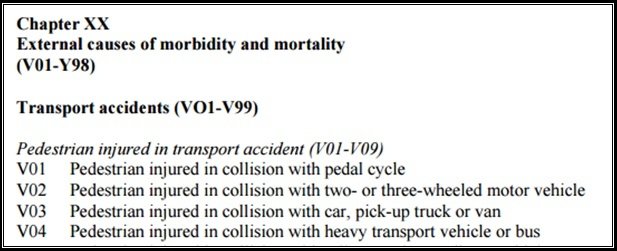
OR
-
one chapter with no specific disease terms but only signs & symptoms
Eg Chapter XVIII: Symptoms, signs and abnormal clinical and laboratory findings, not elsewhere classified
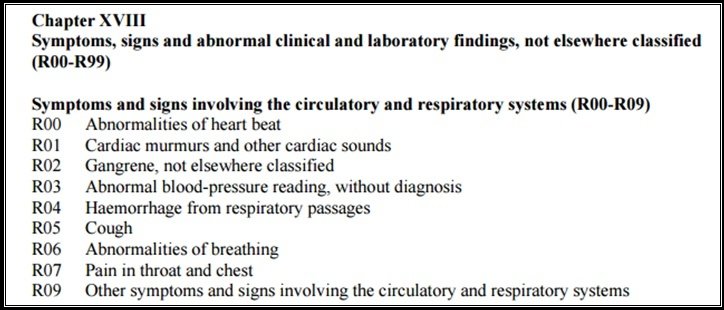
b. Each chapter is divided into blocks of related conditions
Eg Chapter IV: Endocrine, nutritional and metabolic diseases includes the following blocks
- Disorders of thyroid gland
- Diabetes mellitus
- Other disorders of glucose regulation and pancreatic internal secretion
- Disorders of other endocrine glands
- Malnutrition
- Other nutritional deficiencies
- Obesity and other hyper alimentation and
- Metabolic disorders
c. Each block is made up of individual codes for specific disease entities. The code range for the chapter starts at 00 and ends at 99 or earlier
Eg


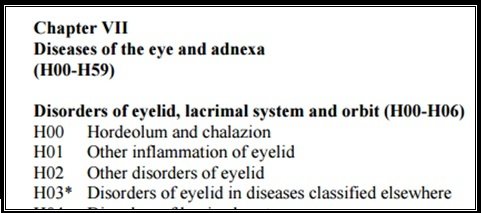
Chapter
Block
Code
a. That means it is a code with an alphabet first followed by numerals
Eg
A15 is the code for tuberculosis (first character from A to Z, followed by 2 digits)
3. The structure of the ICD code is alphanumeric
b. Most categories are further divided into subcategories to enable coding of a disease condition more specifically
Eg
A15.1 (first character from A to Z, followed by 2 digits, then a decimal point and finally another digit)
This means
A15 is respiratory tuberculosis, bacteriologically and histologically confirmed
-
A15.0 is tuberculosis of the lung, confirmed by sputum microscopy with or without culture, and
-
A15.1 is tuberculosis of the lung, confirmed by culture only
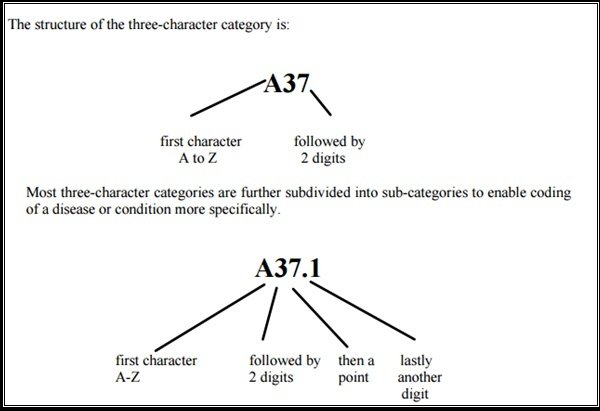
In this course, we will concentrate only on 3-digit coding
You have now come to the end of this learning activity.
Move on to your next learning activity.